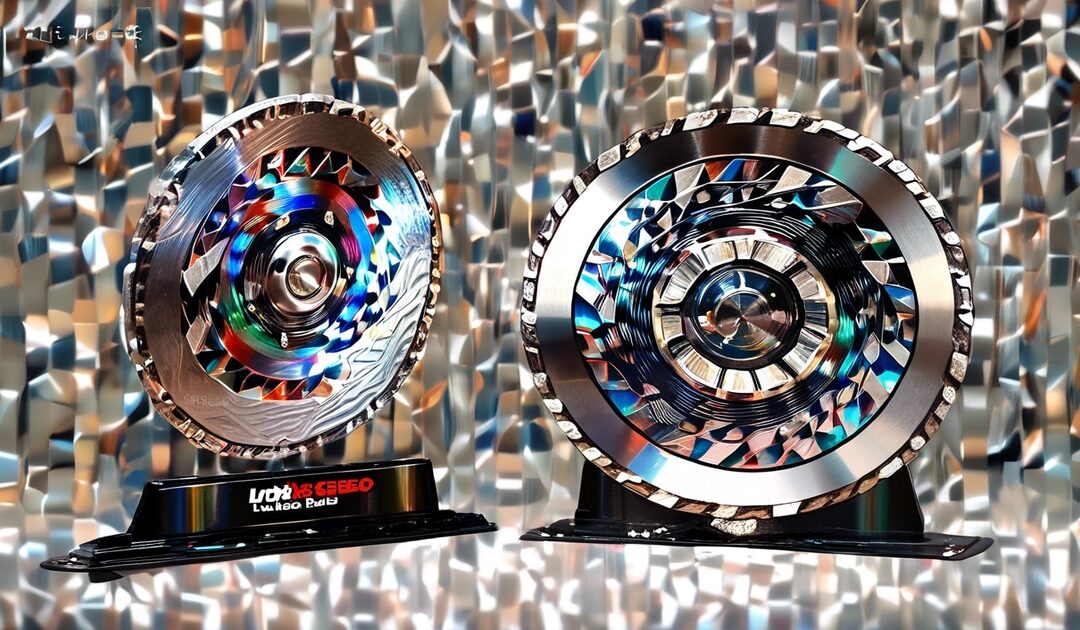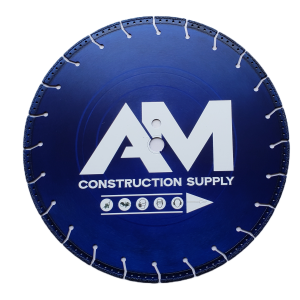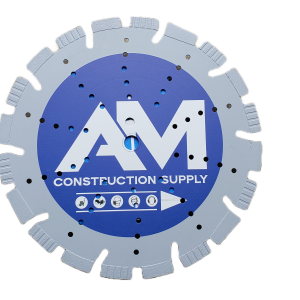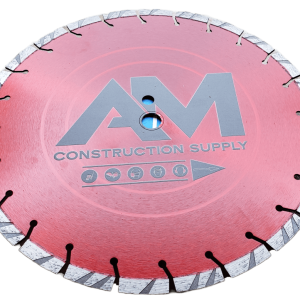Curious about the disparities between a diamond turbo blade and a diamond segmented blade? Wonder no more! These two types of diamond blades may seem similar, but their differences are crucial in determining the best choice for your cutting needs. While both excel in precision cutting, the turbo blade’s continuous rim offers smoother cuts for materials like granite and marble. On the other hand, the segmented blade’s notched design provides faster cuts through tougher materials such as concrete and brick. Understanding these distinctions can save you time and effort on your next cutting project. Get ready to make an informed decision that suits your specific cutting requirements.
Key Takeaways
- Understand the differences between diamond turbo blades and diamond segmented blades to make informed choices for your cutting needs.
- Segmented rim blades are ideal for heavy-duty cutting tasks, while turbo rim blades excel in faster and smoother cuts for softer materials.
- Consider the material you will be cutting and the desired cutting speed when choosing between segmented and turbo blades.
- Regularly inspect and maintain your diamond blades to ensure optimal performance and longevity.
- Investing in quality diamond blades can significantly improve cutting efficiency and overall results.
- By selecting the right blade type and practicing proper maintenance, you can enhance the precision and durability of your cutting tools.
Diamond Blade Basics
Composition and Design
Diamond turbo blades are typically manufactured using a combination of diamond crystals and metal powders. These blades are known for their continuous rim design, which provides smooth cutting in materials like granite and marble. The composition of diamond turbo blades ensures fast and precise cuts due to the even distribution of diamonds along the edge.
On the other hand, diamond segmented blades feature diamond segments attached to the outer edge of the blade. These segments contain a mix of diamonds and metal powders that are bonded together under high pressure. The specific design elements, such as the spacing and arrangement of segments, play a crucial role in enhancing cutting efficiency and durability.
The composition of diamond turbo blades allows for quick cuts through hard materials like concrete and masonry. In contrast, the design of segmented blades with distinct gullets between each segment helps in dissipating heat effectively during cutting operations. This design feature prevents overheating and ensures longer blade life.
Applications and Uses
Diamond turbo blades are ideal for applications requiring fast and chip-free cutting, making them suitable for tasks such as tile installation, ceramic work, or delicate stone work. These blades excel in projects where precision is key, delivering clean cuts without chipping or causing damage to the material being cut.
Diamond segmented blades find common use in construction projects involving heavy-duty materials like asphalt, concrete, brick, and block. Their ability to withstand tough materials makes them perfect for tasks like roadwork, demolition projects, or large-scale construction where durability and efficiency are paramount.
Projects that benefit from diamond turbo blades include intricate designs on delicate surfaces like glass or porcelain tiles. On the other hand, construction projects like building foundations or road repairs benefit significantly from the use of diamond segmented blades due to their ability to handle tough materials with ease.
Types of Diamond Blades
Segmented Rim Blades
Segmented rim blades feature a design where the cutting edge is divided into segments with gullets in between. This design allows for better cooling and debris removal during cutting tasks. The segments are either cold-pressed or laser-welded onto the core.
Using segmented rim blades is advantageous when cutting through hard materials like concrete, brick, or stone. These blades provide faster cutting speeds and longer lifespan due to their efficient heat dissipation. The gaps between segments aid in dissipating heat generated during cutting operations.
Segmented rim blades are ideal for heavy-duty applications that require aggressive cutting actions. Their segmented design ensures that the blade remains cool even during prolonged use, making them suitable for high-demanding jobs such as masonry work or road construction.
Turbo Rim Blades
Turbo rim blades share a similar segmented structure with segmented rim blades but have a unique turbo-style rim segment pattern. The turbo design includes deep undercuts to enhance cooling and prevent overheating during intense cutting tasks. These blades are known for their versatility and ability to cut through harder materials effortlessly.
Using turbo rim blades offers several benefits, especially when working with dense materials like granite or marble. Their enhanced cooling design allows for continuous use without compromising on cutting speed or precision. Turbo rim blades are popular among professionals who prioritize efficiency and accuracy in their cutting projects.
Turbo rim blades excel in providing fast and clean cuts on various surfaces, making them a preferred choice for contractors handling intricate projects that demand both speed and accuracy. Their turbo-style rim ensures smooth operation even when dealing with tough materials, delivering precise results consistently.
Continuous Rim Blades
Continuous rim blades feature a solid, continuous edge without any segments or breaks along the circumference. This seamless design provides smooth and chip-free cuts, making them ideal for delicate materials like ceramic tiles or porcelain.
Continuous rim blades offer precise cuts with minimal chipping, making them suitable for applications where a polished finish is essential. They are commonly used in projects requiring fine detailing and intricate cuts, such as tile installation or decorative stonework.
Continuous rim blades are versatile tools that cater to various cutting needs across different materials. Their seamless edge ensures clean cuts without any jagged edges, making them indispensable for tasks that demand high precision and flawless finishes.
Segmented Rim Blades Explained
Design Characteristics
Diamond turbo blades feature specially designed ridges that help in faster cutting of materials. These blades have cutouts or slots around the rim to aid in cooling during cutting. The turbo design allows for smoother, cleaner cuts with reduced chipping. On the other hand, diamond segmented blades have segments on the edge that provide better precision and control during cutting tasks. The segments are separated by slots to prevent overheating and ensure efficient debris removal, enhancing blade performance.
The structural differences between segmented and turbo blades cater to distinct cutting requirements. Diamond turbo blades are ideal for fast and aggressive cutting due to their continuous rim design, which provides a more extended lifespan compared to segmented blades. Conversely, segmented rim blades offer better precision and versatility for various cutting applications. The unique design of segmented blades allows for smoother cuts in delicate materials while maintaining durability for tougher projects.
Design characteristics play a crucial role in determining the durability and longevity of diamond blades. Diamond turbo blades are known for their speed and efficiency in cutting through hard materials like concrete, granite, and brick. The turbo design reduces heat buildup during operation, preventing blade warping and extending its lifespan. In comparison, segmented rim blades excel in providing clean cuts with minimal chipping, making them suitable for intricate tasks such as tile or masonry work.
Ideal Applications
Segmented rim blades are most effective in applications requiring precise cuts without damaging the material’s surface. These blades are commonly used for cutting tiles, ceramics, porcelain, or natural stone where smooth edges are essential. On the other hand, turbo rim blades are best suited for cutting dense materials such as concrete, asphalt, or granite due to their aggressive cutting nature. Turbo blades are ideal for construction projects that demand quick and efficient cutting through tough materials.
When selecting the right blade based on project requirements, consider factors like material hardness, thickness, and desired finish quality. For delicate tasks that require finesse and accuracy, opt for segmented rim blades to achieve clean cuts without surface damage. For heavy-duty projects involving dense materials that need rapid cutting speeds and durability, diamond turbo blades are the preferred choice.
Turbo Rim Blades Detailed
Design Features
Turbo rim blades feature deep grooves and relief holes that enhance heat dissipation during cutting. The design allows for efficient cooling, reducing the risk of overheating. These features also prevent the blade from warping due to excessive heat buildup. Comparatively, segmented rim blades have shallower segments with gaps in between, aiding in chip removal and airflow. The design of turbo rim blades ensures a smoother cut by minimizing friction and heat generation.
When it comes to cutting efficiency, turbo rim blades are renowned for their ability to provide faster and cleaner cuts. The unique design of these blades enables them to slice through materials with precision and speed. In contrast, segmented rim blades are ideal for heavy-duty tasks that require aggressive cutting due to their robust construction.
Preferred Uses
For projects involving hard materials like granite or concrete, segmented rim blades are the preferred choice. Their rugged design allows for aggressive cutting without compromising on durability. On the other hand, turbo rim blades excel in tasks that demand precision and finesse, such as tile or ceramic cutting. These blades offer smooth cuts with minimal chipping, making them suitable for delicate materials.
In selecting the right diamond blade for a project, consider factors such as material type, thickness, and desired finish. Segmented rim blades are versatile and can handle a wide range of materials, making them a popular choice for general-purpose cutting. Turbo rim blades shine in applications where a clean finish is crucial, such as in masonry work or tile installation. By understanding the specific requirements of each project, you can determine whether a segmented or turbo rim blade is best suited for the job.
Comparing Segmented and Turbo Blades
Cutting Speed
Diamond turbo rim blades are known for their faster cutting speed compared to segmented rim blades. The design of the turbo blade features a continuous rim with serrated edges, allowing for swift and aggressive cutting through various materials. This design reduces friction, enabling quicker cuts without compromising precision. To maximize cutting speed, ensure the blade’s RPM matches the material being cut and maintain a steady feed rate.
Cooling Requirements
Segmented rim blades require water cooling during cutting operations to prevent overheating and maintain blade integrity. In contrast, turbo rim blades are designed to dissipate heat effectively without the need for water cooling. The unique shape of turbo segments facilitates airflow around the blade, preventing overheating and ensuring consistent performance. Proper cooling is crucial for preventing blade warping and extending its lifespan.
Durability and Longevity
In high-intensity cutting applications, segmented rim blades showcase impressive durability due to their robust construction. These blades excel in handling tough materials such as concrete and granite while maintaining sharpness over extended periods. On the other hand, turbo rim blades demonstrate exceptional longevity when cutting through hard materials like asphalt or brick. Regular cleaning and proper storage are essential practices to preserve the sharpness and extend the lifespan of diamond blades.
Choosing the Right Blade
Material Considerations
When selecting a diamond blade, it’s crucial to consider the material hardness being cut. Diamond segmented blades are ideal for hard materials like granite and concrete due to their durability. On the other hand, diamond turbo blades work best on softer materials like marble and ceramic tiles.
Different blade types excel in cutting specific materials efficiently. Segmented blades have diamond segments on the rim for aggressive cutting, making them suitable for tough materials. In contrast, turbo blades have a continuous rim with small slots for smoother cuts on softer surfaces.
To ensure project success, it’s essential to match the blade material with the project requirements. For hard materials demanding precision cuts, segmented blades are preferred. Conversely, turbo blades are more suitable for softer materials where smooth finishes are crucial.
Project Needs
Assessing project needs before choosing a diamond blade is paramount for achieving desired outcomes. The scale of the project plays a vital role in determining whether a segmented or turbo blade is more appropriate. Larger projects often benefit from segmented blades’ durability and speed.
Moreover, considering the type of material being worked on is crucial when deciding between segmented and turbo blades. For heavy-duty tasks involving hard materials, segmented blades offer superior performance and longevity. On the other hand, turbo blades are better suited for projects involving softer materials that require finesse.
Aligning diamond blade selection with project timelines and requirements is key to efficiency. Segmented blades are favored for projects with tight deadlines due to their faster cutting speeds and durability. Turbo blades, while slightly slower, provide smoother finishes ideal for projects with specific aesthetic needs.
Maintenance Tips
Cleaning and Storage
Cleaning diamond blades after use is crucial to prevent tool damage and maintain cutting efficiency. Properly remove debris and residues to ensure optimal performance in future projects.
For storage, keep diamond blades in a dry place to avoid corrosion and damage. Storing them flat or hanging prevents warping, extending their lifespan.
To maintain diamond blades for future projects, ensure they are dry before storage. Regularly inspect for chipping or wear.
Inspection and Replacement
Regular inspection of diamond blades is essential to detect wear and potential damage early on. Look for signs of blade dullness or missing segments.
Indicators like reduced cutting speed signal the need for blade replacement. In construction projects, safety is paramount; replace blades promptly when necessary.
Guidelines suggest replacing diamond blades when they exhibit signs of wear or chipping to maintain cutting quality and safety.
Quality Diamond Blades Advantage
Product Range
Diamond blades come in various types, including turbo and segmented blades, each designed for specific cutting tasks. Turbo blades have continuous rims for fast, smooth cuts on hard materials like granite and concrete. On the other hand, segmented blades feature gaps between the segments to allow better cooling and debris removal during cutting.
When choosing between a diamond turbo blade and a diamond segmented blade, consider the material you will be cutting. Turbo blades work best for hard materials like concrete, while segmented blades are more suitable for softer materials like asphalt. The choice of blade type can significantly impact the efficiency and quality of your cutting projects.
Diamond blades vary in sizes, ranging from 4 inches to over 36 inches in diameter. They differ in terms of arbor size, segment height, and diamond concentration. Understanding these specifications is crucial in selecting the right blade for your specific cutting needs.
-
Pros of Diamond Turbo Blade:
- Ideal for hard materials like granite and concrete.
- Provides fast and smooth cuts due to continuous rim design.
- Suitable for dry cutting applications.
-
- May chip or crack when used on softer materials.
- Not as effective for wet cutting applications.
Customer Support
Reliable customer support is essential when investing in diamond blades for your cutting projects. Good customer service can provide valuable guidance on selecting the right blade type based on your project requirements.
Customer support also plays a crucial role in offering assistance with blade maintenance and troubleshooting. Whether you have inquiries about blade usage or encounter issues during cutting operations, having access to knowledgeable support can make a significant difference in achieving optimal results.
When purchasing diamond blades, ensure that the manufacturer or supplier offers accessible customer support channels such as email, phone helplines, or online chat services. This ensures that you can reach out for assistance whenever needed to maximize the performance and lifespan of your diamond blades.
Final Remarks
Now that you understand the disparities between diamond turbo blades and diamond segmented blades, you can confidently select the right blade for your cutting needs. Remember, segmented blades are ideal for rough cutting, while turbo blades excel in smoother cuts. By choosing the appropriate blade and following maintenance tips, you ensure longevity and efficiency in your cutting projects.
Make sure to consider the material you are cutting, the type of cut required, and the equipment being used when deciding on a diamond blade. Your choice will significantly impact the quality of your work. Don’t forget to invest in quality diamond blades to reap the benefits of precision cutting and durability. Equip yourself with this knowledge and elevate your cutting game today!
Frequently Asked Questions
What are the key differences between a diamond turbo blade and a diamond segmented blade?
Diamond turbo blades have a continuous rim with serrated edges for faster cutting speeds, ideal for smooth cuts. Diamond segmented blades have gaps between the segments for better cooling and debris removal, suitable for longer cuts on hard materials.
How do I determine whether to use a segmented or turbo diamond blade?
Choose a segmented diamond blade for applications requiring precision and clean cuts on hard materials. Opt for a turbo diamond blade when speed is crucial, as it offers faster cutting but may result in slightly rougher finishes compared to segmented blades.
Can I use a diamond segmented blade for the same applications as a diamond turbo blade?
Yes, you can use a diamond segmented blade for similar applications as a diamond turbo blade. However, the choice between the two depends on factors like cutting speed requirements, material hardness, and desired finish quality.
Are there any maintenance tips specific to diamond turbo blades or segmented blades?
For both types of blades, ensure proper cooling during operation to prevent overheating. Clean the blades regularly to remove debris buildup that can affect cutting performance. Store them properly to avoid damage and maintain their sharpness.
What advantages do quality diamond blades offer over standard ones?
Quality diamond blades provide superior durability, precision cutting, and longer lifespan compared to standard blades. They ensure smoother cuts with minimal chipping or breakage, making them cost-effective in the long run due to reduced downtime and replacement frequency.





